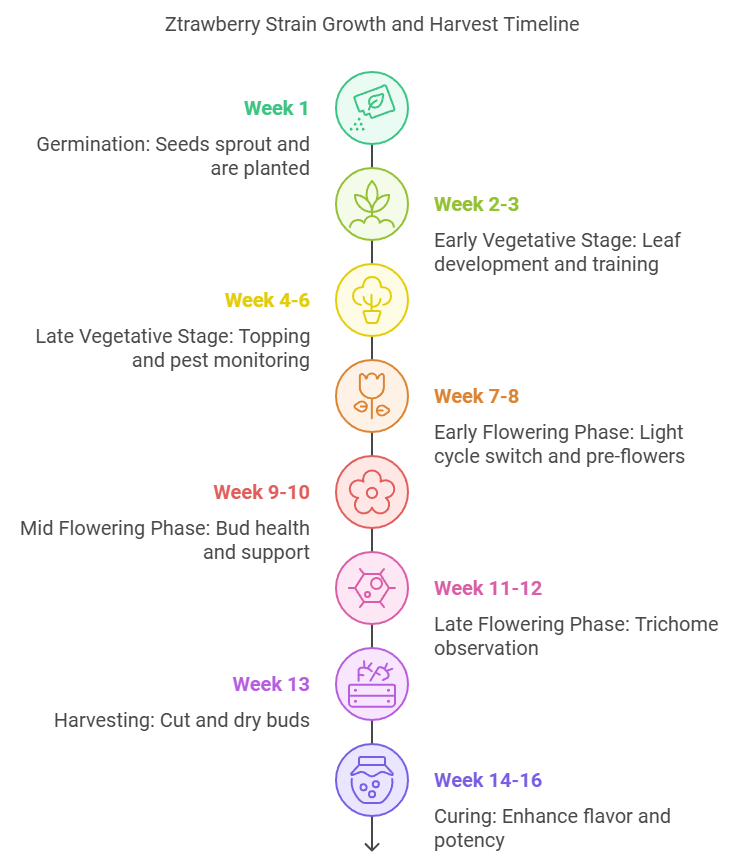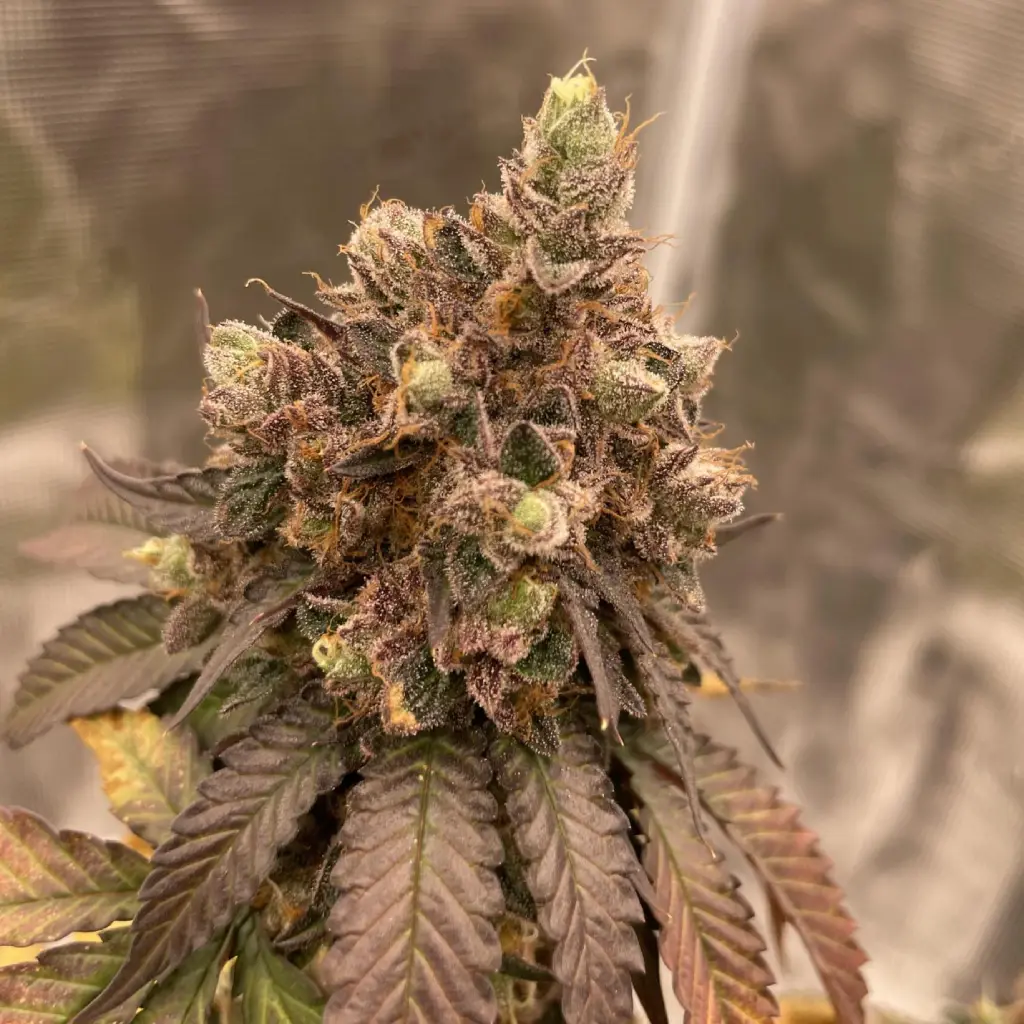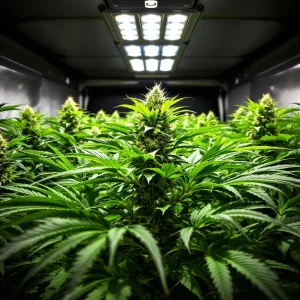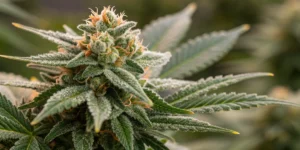The Ztrawberry strain is a delightful cannabis variety that combines unique flavors with rewarding effects. With its fruity and sweet terpene profile, Ztrawberry is an absolute favorite among cultivators who are looking for a well-balanced grow. In this guide, we’ll explore everything you need to know about growing Ztrawberry, ensuring you maximize your yields and enjoy the full potential of this aromatic strain.
Ztrawberry Strain Description
Ztrawberry strain is a hybrid with a perfect blend of relaxing and uplifting effects, which makes it suitable for both recreational and medicinal use. The buds are typically dense, showcasing a vibrant mix of green and orange hues, sometimes tinged with purple. Its aroma is a standout feature, with notes of ripe strawberries mixed with subtle earthy undertones, creating a fruity explosion that captivates enthusiasts.
Ztrawberry is known for its balanced THC content, usually ranging between 18% to 22%. This makes it potent enough to deliver strong effects while still providing a pleasant experience for those new to cannabis cultivation. Whether grown indoors or outdoors, the strain adapts well, making it a versatile option for both beginner and experienced growers.
Environmental Requirements for Growing Ztrawberry
To grow Ztrawberry successfully, paying attention to its environmental needs is crucial. Ztrawberry thrives in a climate that replicates Mediterranean conditions, warm, sunny, and with consistent airflow. Temperatures should ideally stay between 70-85°F (21-29°C) during the vegetative stage, while slightly cooler temperatures during flowering help bring out the beautiful colors in the buds.
Humidity levels are also an important factor. During the vegetative stage, maintain humidity at around 50-60%, and reduce it to 40-50% during the flowering stage to prevent mold or mildew. Providing optimal airflow and ventilation in both indoor and outdoor settings will further ensure that Ztrawberry strain grows healthy and robust.
For those considering different training techniques to enhance yields, some growers may wonder, can you top an autoflower? If you’re growing an autoflowering version of Ztrawberry or any other strain, check out this guide on topping autoflowers to learn more about whether this technique is suitable for your plants.
Setting Up The Growing Cannabis Space
Before planting your Ztrawberry seeds, setting up the grow space properly is key to ensuring healthy development. Whether you are growing indoors or outdoors, you need to create an environment that meets the specific needs of this strain.
Indoor Cannabis Cultivation
Growing Ztrawberry indoors gives you more control over environmental conditions. It’s important to set up grow lights, such as LED or HPS, to provide sufficient light for photosynthesis. Ztrawberry requires at least 18 hours of light during the vegetative phase and 12 hours during flowering.
Make sure to use high-quality soil or a hydroponic setup to provide the necessary nutrients. Maintaining a temperature-controlled grow tent with proper humidity levels will maximize growth and yield. Training techniques like topping and LST (Low-Stress Training) can also be applied to encourage bushier growth and greater yields.
Outdoor Cannabis Cultivation
Ztrawberry can also be grown outdoors, especially in climates with plenty of sunshine. Choose a spot with direct sunlight for at least 6-8 hours per day. Planting in nutrient-rich soil will ensure healthy growth, and adding organic compost can improve both texture and nutrient availability.
It’s also essential to protect the plants from pests and excessive rain, which could harm the buds. Using organic pesticides or companion planting can help reduce pests naturally. Outdoor-grown Ztrawberry tends to grow larger and produce higher yields if given enough space and the right conditions.
Propagation and Germination of Ztrawberry strain
Propagation is the first crucial step in growing Ztrawberry, and getting it right sets the stage for a successful grow. You can start your Ztrawberry plants from seeds or clones, depending on availability and preference.
For seed germination, soak the seeds in distilled water for about 12-24 hours. Once the seeds sink, transfer them to a moist paper towel, keeping them in a dark, warm spot until they sprout. Once the taproot emerges, plant the germinated seeds in small pots filled with high-quality soil, placing them under grow lights to begin their journey.
For those who have access to clones, make sure the cuttings are healthy and disease-free. Place the clones in a growing medium such as rockwool or directly into the soil. Ensure the humidity is high during the early rooting phase to promote root development.
Vegetative Phase of Ztrawberry
During the vegetative phase, Ztrawberry grows rapidly, focusing its energy on developing strong stems and a robust root system. This phase usually lasts between 4 to 6 weeks, depending on the desired plant size and growing conditions.
Provide plenty of nitrogen during this stage to support lush foliage growth. The light cycle should be maintained at 18-24 hours per day, with a temperature range of 70-85°F (21-29°C). Regular pruning of the lower leaves can help promote better airflow and prevent any mold or pest issues.
Training techniques like topping or FIMing can help control the plant’s height and encourage bushier growth. Ztrawberry responds well to Low-Stress Training (LST), which can be used to expose more bud sites to light, ultimately increasing yields.
Flowering Phase of Ztrawberry
The flowering phase is where Ztrawberry begins to develop its aromatic, resinous buds. This phase usually takes between 8 to 10 weeks, with the buds reaching full maturity toward the end of this period.
Switch the light cycle to 12 hours of light and 12 hours of darkness to trigger flowering. During the first few weeks, the plants will stretch significantly, so ensuring enough space in your grow tent is crucial. Lower humidity to around 40-50% to prevent mold, and keep temperatures between 65-80°F (18-26°C) for optimal bud development.
Feeding during the flowering stage should focus on phosphorus and potassium, as these nutrients support flower growth and resin production. Avoid overfeeding, as nutrient burn can reduce the quality of your harvest.
Cannabis Fertilization and Nutrition
Feeding Ztrawberry properly throughout its life cycle ensures robust growth and high-quality buds. During the vegetative stage, focus on nitrogen-rich fertilizers, as this will help with leafy growth and overall plant health.
During flowering, switch to a fertilizer higher in phosphorus and potassium. Organic options like bat guano or bone meal can work wonders for Ztrawberry’s bud development. Keep an eye out for nutrient deficiencies, yellowing leaves could indicate nitrogen deficiency, while slow bud development may indicate a lack of phosphorus.
Regular flushing of the growing medium with plain water helps prevent salt buildup, which could negatively affect plant health. Aim to flush at least two weeks before harvesting to ensure a clean and flavorful smoke.
Pest and Disease Control for Cannabis Growing
Pests and diseases are common threats that can significantly impact the yield and quality of your Ztrawberry harvest. Effective pest and disease management is key to a successful grow.
Prevention
Preventing pests and diseases is much easier than dealing with an outbreak. To protect your Ztrawberry plants, maintain good airflow, keep humidity levels in check, and regularly inspect your plants for any signs of problems. Yellow sticky traps can help monitor insect populations, while companion planting with herbs like basil or marigold can help deter pests naturally.
Using beneficial insects like ladybugs or predatory mites can also keep pest populations under control without using harsh chemicals. These natural predators feed on harmful insects such as aphids, spider mites, and thrips.
Corrective Actions
If pests or diseases are detected, take swift action. For pests like spider mites or aphids, neem oil or insecticidal soap can help control their populations. For fungal issues like powdery mildew, reduce humidity levels and remove any affected plant material to prevent it from spreading.
In severe cases, stronger treatments may be necessary. Always opt for organic or plant-safe products to avoid contaminating your harvest with harsh chemicals.
Harvesting and Curing for Cannabis Growing
Harvesting your Ztrawberry strain strain at the right time is crucial for maximizing flavor, potency, and yield. The best way to determine when your Ztrawberry strain plants are ready for harvest is to closely observe the trichomes. Trichomes are the small, crystal-like structures that cover the buds, and their color indicates the plant’s maturity.
For a well-balanced effect, wait until the trichomes are mostly milky white with a few turning amber. This is when the THC content is at its peak, and the flavor profile will be the richest. Cut the branches at the base and hang them upside down in a dark room with good ventilation.
Curing is the next step after drying. Trim the buds and place them in airtight jars, burping them daily to release moisture. This process can take up to 3-4 weeks but is vital to enhancing the aroma and overall quality of the buds. Proper curing preserves terpenes and cannabinoids, ensuring that your Ztrawberry strain flowers taste sweet and fruity, with a smooth smoke.
Is Ztrawberry strain Indica or Sativa?
Ztrawberry strain is a well-balanced hybrid, offering the best of both indica and sativa genetics. The balanced nature of Ztrawberry strain provides a relaxing body high typical of indica strains, paired with an uplifting cerebral effect that sativa enthusiasts adore. This hybrid quality makes it ideal for a variety of uses, whether you’re looking for a daytime mood booster or an evening relaxant.
Understanding its genetic makeup helps growers predict plant growth characteristics. With indica traits, expect dense buds and shorter internodal spacing. The sativa lineage contributes to Ztrawberry strain’s vigor during the vegetative phase, resulting in a bushy plant that benefits from topping and training to maximize yields.
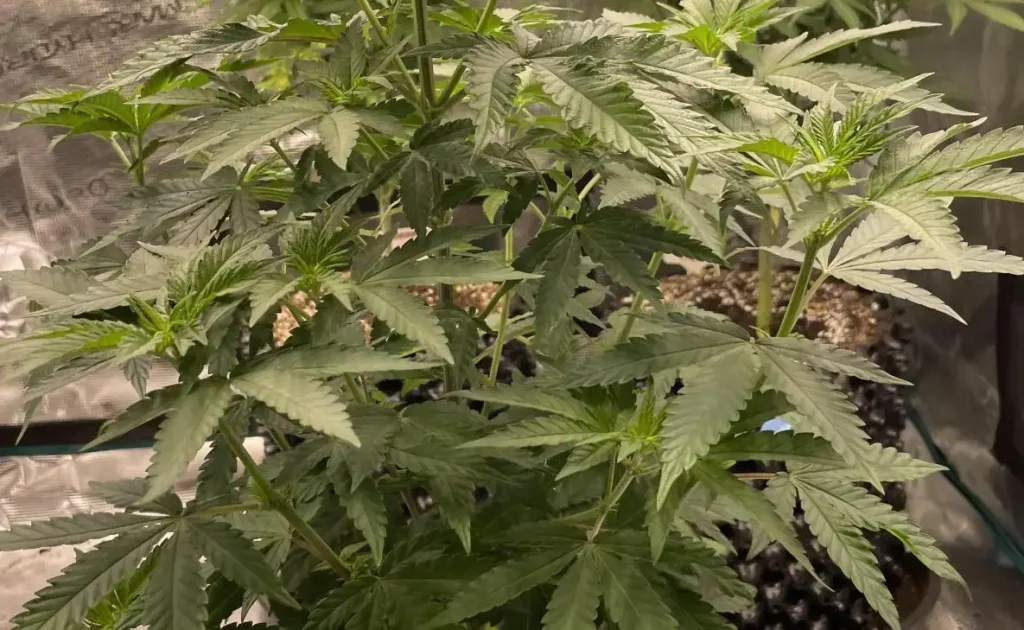
Advantages of Growing Ztrawberry strain
One of the significant advantages of growing Ztrawberry strain is its adaptability. It grows well both indoors and outdoors, making it a versatile option for different growers. The strain is resistant to common pests and molds, which reduces the need for constant pest management and makes it relatively beginner-friendly.
Ztrawberry strain also has a manageable flowering time of 8-10 weeks, allowing growers to enjoy a decently quick harvest compared to some longer-blooming strains. The yield is impressive, especially when the plant receives proper training during its vegetative growth. Plus, the delightful aroma and flavor profile of Ztrawberry strain make the effort worthwhile, expect a fruity burst that makes this strain a crowd-pleaser.
Disadvantages of Growing Ztrawberry strain
While Ztrawberry strain is relatively easy to grow, there are some challenges to be aware of. The strain is sensitive to temperature fluctuations, especially during the flowering phase. Extreme temperatures, either too hot or too cold, can lead to reduced resin production and negatively affect bud quality.
Another potential disadvantage is the need for consistent pruning and training. Because Ztrawberry strain tends to grow bushy, it requires regular maintenance to ensure adequate light penetration and airflow throughout the plant. Growers must keep an eye on humidity levels, especially during late flowering, to avoid mold issues.
Problems in Cultivating
When cultivating Ztrawberry strain, growers may encounter some common problems. One such issue is nutrient burn, which often occurs if the plant receives too much fertilizer. The signs of nutrient burn include curled leaf tips and discoloration. To avoid this, always start with a lower nutrient concentration and gradually increase as the plant shows signs of needing more.
Another potential problem is pests such as spider mites or aphids, particularly in outdoor settings. Regular monitoring and the use of organic pest control solutions can help keep these pests at bay. In indoor grows, powdery mildew is a concern, especially in humid environments. To prevent mildew, maintain proper ventilation and keep humidity under control.
Advanced Pest Control for Cannabis Growing
Advanced pest control strategies for Ztrawberry strain focus on both prevention and intervention. Integrated Pest Management (IPM) is a sustainable approach that combines biological, cultural, and physical control methods. One effective technique is introducing beneficial insects, such as ladybugs, that naturally prey on harmful pests like aphids and spider mites.
Another advanced tactic is using foliar sprays with essential oils, such as rosemary or neem oil. These sprays can deter pests without harming your plants. Regularly inspecting leaves for signs of pests and acting quickly can prevent infestations from escalating.
Similar Strains
If you enjoy the characteristics of Ztrawberry strain, there are a few other strains you might find interesting. Strawberry Cough shares a similar fruity flavor and uplifting effect, making it a great alternative for those who love berry strains. Pineapple Express is another hybrid that combines a sweet, tropical flavor with balanced effects, providing a similar experience to Ztrawberry strain.
Gelato is also a comparable strain, offering a creamy sweetness and a powerful high that blends relaxation with euphoria. Exploring these similar strains can add variety to your grow space while maintaining that fruity, enjoyable flavor profile that makes Ztrawberry strain so popular.
Week-by-Week Growth Plan
To grow Ztrawberry strain effectively, it’s essential to follow a detailed week-by-week growth plan. This ensures each phase is managed optimally for the best possible results.
Week 1: Germination
- Light Cycle: 18-24 hours of light per day.
- Humidity: 60-70% to encourage seedling growth.
- Activity: Place seeds in a moist paper towel until the taproot emerges. Transfer sprouted seeds into starter pots with high-quality soil.
Week 2-3: Early Vegetative Stage
- Light Cycle: 18-24 hours of light per day.
- Humidity: 50-60% to support leaf development.
- Feeding: Use a nitrogen-rich fertilizer to promote strong vegetative growth.
- Activity: Begin training lightly, like LST, to guide the growth of the young plant.
Week 4-6: Late Vegetative Stage
- Light Cycle: 18 hours of light per day.
- Humidity: 50% to keep growth vigorous.
- Feeding: Continue feeding nitrogen-rich nutrients and introduce some micronutrients.
- Activity: Perform topping or FIMing to encourage a bushier plant structure. Monitor for pests.
Week 7-8: Early Flowering Phase
- Light Cycle: Switch to 12 hours of light and 12 hours of darkness.
- Humidity: 40-50% to prevent mold.
- Feeding: Shift to a bloom fertilizer rich in phosphorus and potassium.
- Activity: Watch for pre-flowers and remove any unnecessary fan leaves that block bud sites.
Week 9-10: Mid Flowering Phase
- Light Cycle: 12 hours of light per day.
- Humidity: 40-45% for bud health.
- Feeding: Keep feeding bloom nutrients while ensuring plants are not overfed.
- Activity: Support branches with stakes or netting if the buds are heavy.
Week 11-12: Late Flowering Phase
- Light Cycle: 12 hours of light per day.
- Humidity: 35-40% to avoid bud rot.
- Feeding: Flush the growing medium with plain water to remove nutrient buildup.
- Activity: Observe trichomes with a magnifying glass to determine harvest readiness.
Week 13: Harvesting
- Light Cycle: Total darkness 48 hours before harvest can increase resin production.
- Activity: Cut the plant at the base and hang buds to dry in a dark, ventilated area.
Week 14-16: Curing
- Activity: Place dried buds in glass jars, burping daily for 2-3 weeks to allow proper curing. This enhances flavor and potency.
FAQs
What is the THC percentage of Ztrawberry strain?
Ztrawberry typically contains between 18% and 22% THC, providing a potent yet manageable experience for both recreational and medicinal users.
How long does it take for Ztrawberry to flower?
The flowering phase for Ztrawberry lasts approximately 8-10 weeks, depending on environmental conditions and specific growing techniques used.
What flavors and terpenes are present in Ztrawberry strain?
Ztrawberry strain features a fruity, strawberry-like flavor with earthy undertones. The prominent terpenes include myrcene, limonene, and caryophyllene.
Can Ztrawberry strain be grown both indoors and outdoors?
Yes, Ztrawberry strain is versatile and can be grown both indoors and outdoors. It adapts well to different environments, provided its basic needs are met.
What are the medicinal benefits of Ztrawberry strain?
It is known for its relaxing and mood-boosting effects. It is often used to help manage stress, anxiety, and mild pain, making it a favorite for those seeking therapeutic relief.
